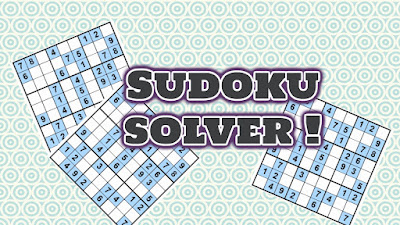Developing a Sudoku solver

I've never been great at solving Sudoku because I find it boring to sit down for an hour staring at boxes some filled and others to be filled with numbers. But I think it's an interesting game. I've always thought of developing an algorithm to solve any given Sudoku puzzle. I've had this in my mind from the very first year of my under graduation but I never gave it a serious thought. If you have seen my previous post, it's about backtracking which is a general algorithm used to solve many problems such as the classical N-Queens problem(I've solved it in that post). Yesterday I tried solving a question on the Hackerrank site which required me to use the backtracking algorithm and I was successful in devising an algorithm to solve it. I felt the question was very similar to solving a Sudoku puzzle so I thought of creating a sudoku solver and I've done it! It was simpler than what I thought it would be. All you need to know is how to use backtracking...





